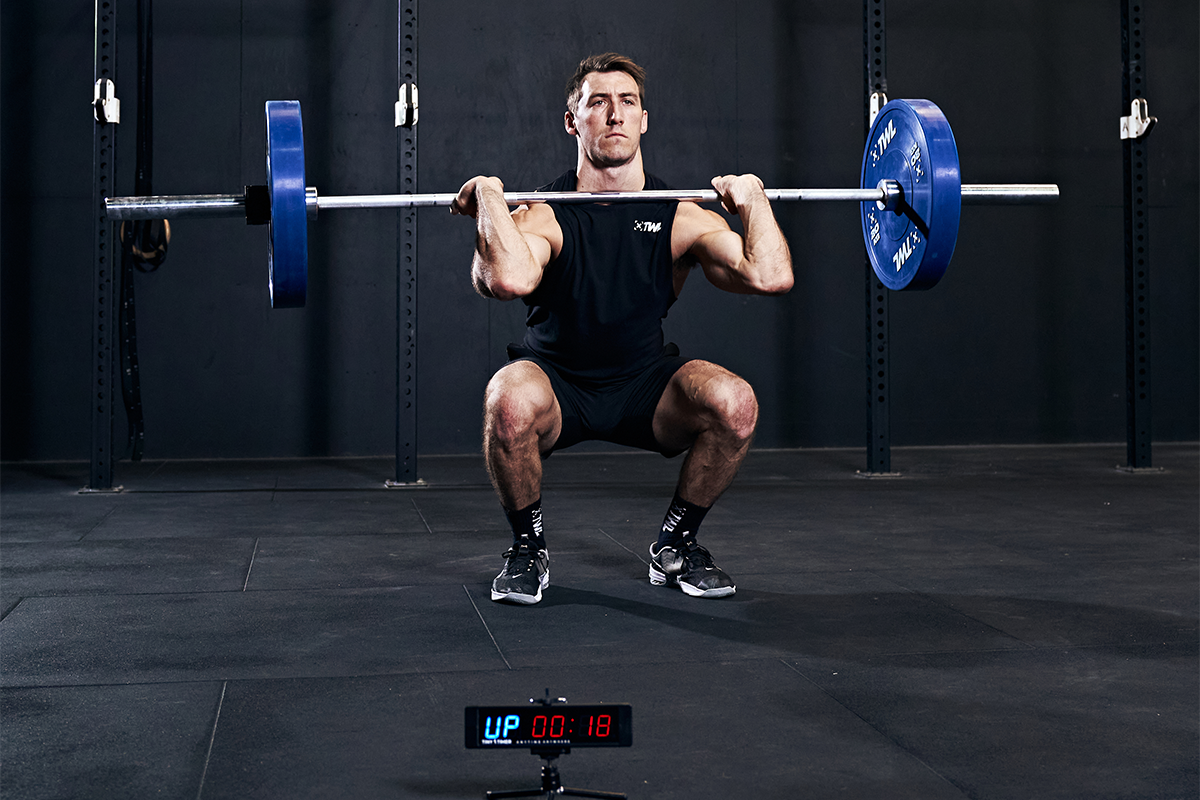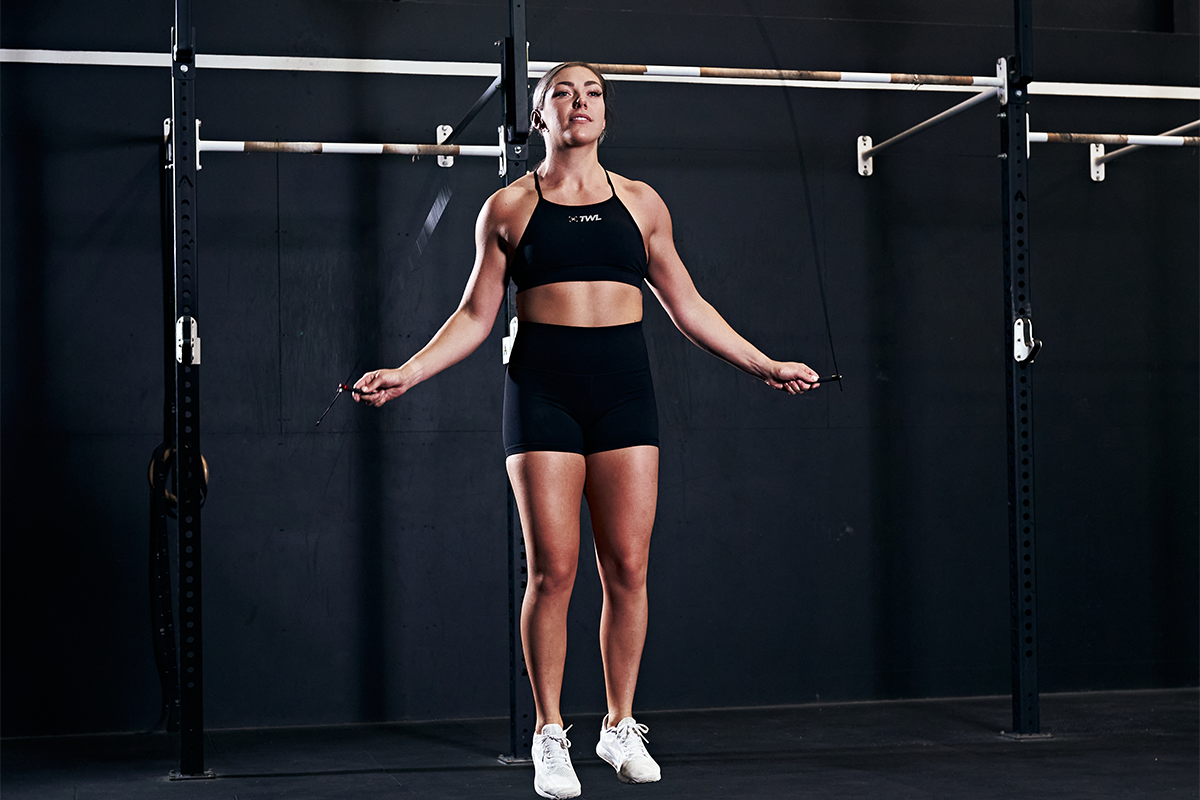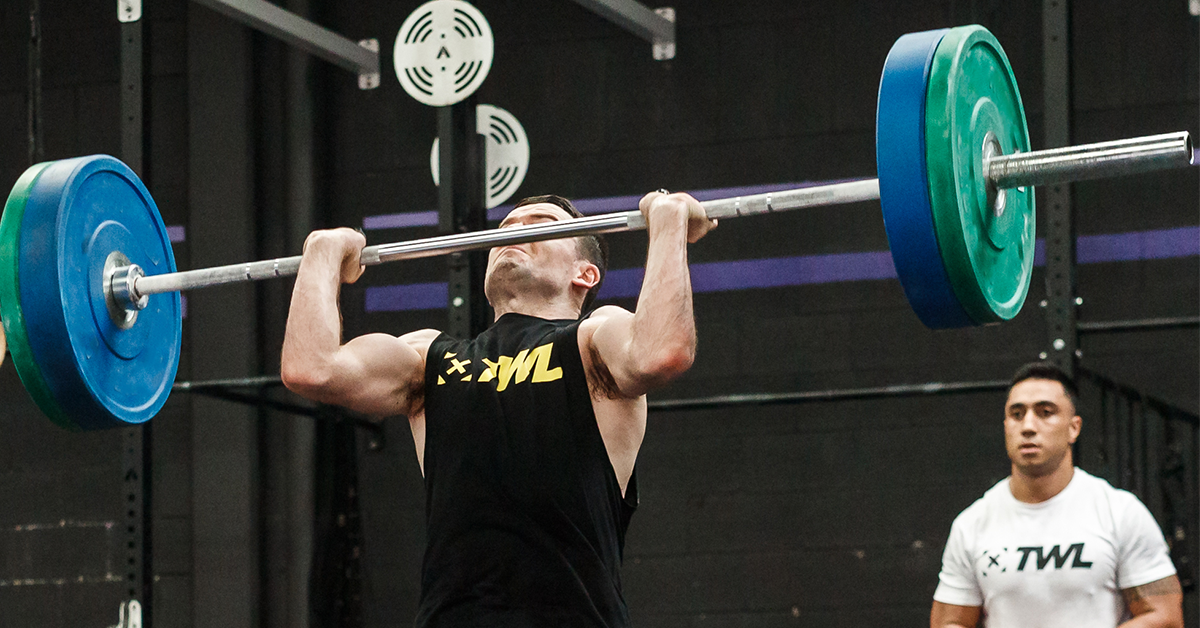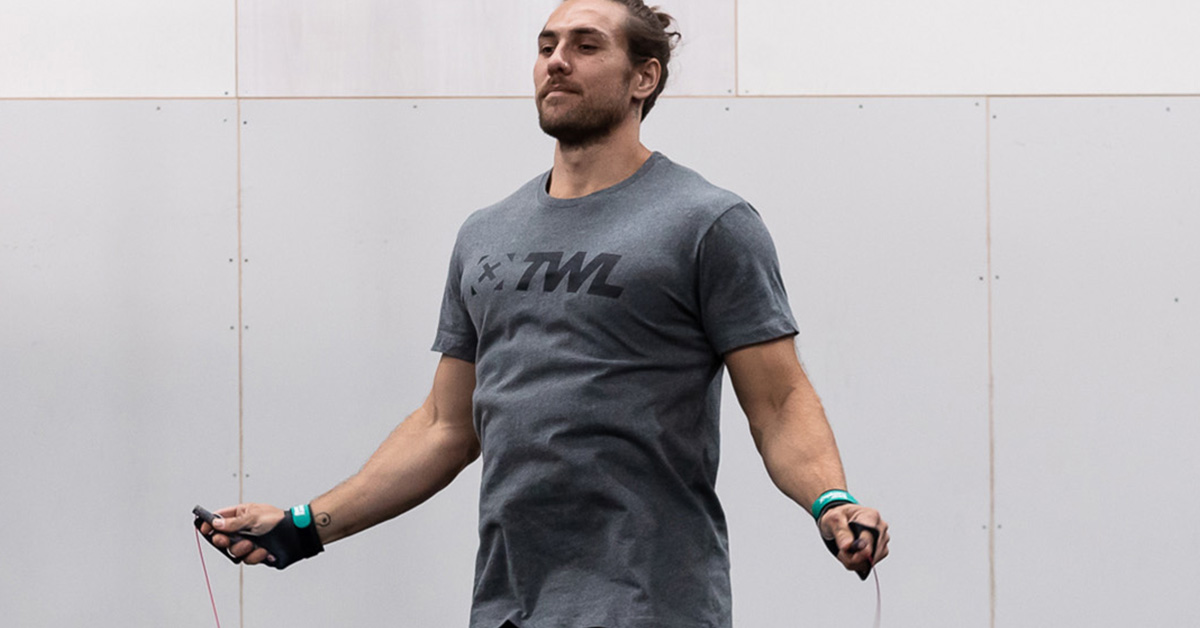The third and final workout of the 2022 Open is here, and, well, we can’t say we’re all that surprised. Thrusters always make an appearance. Pull-ups? Of course. Double-unders? Sure, why not? But this time, they’re all crammed into a single workout that isn’t short on reps, and it goes without saying: This one is going to be spicy. 22.3 is:
- 21 pull-ups
- 42 double-unders
- 21 thrusters (weight 1)
- 18 chest-to-bar pull-ups
- 36 double-unders
- 18 thrusters (weight 2)
- 15 bar muscle-ups
- 30 double-unders
- 15 thrusters (weight 3)
Women lift 65/75/85lbs, and men lift 95/115/135lb. There’s a 12-minute time cap.
Ouch.
View this post on Instagram
This is an interesting one because the reps decrease, but the weight of the thrusters increases. The bar work also becomes more challenging because you go from standard pull-ups to chest-to-bar pull-ups to bar muscle-ups.
So, how can you get after 22.3 and position yourself to get as many reps in as possible? Let’s talk strategy, tips, and gear!
Open Workout 22.3: Tips, Tricks, and Helpful Gear
This is another long workout — 12 minutes is absolutely not a sprint. Keep these things in mind.
1. Use Grips from the Get-Go
You’re going to feel really fresh in the beginning, but rips, tears, and blisters can sneak up on you. We suggest securing your hand grips from the very beginning to preserve your skin for as long as possible. The type of grips you go with is a personal preference, but here are a few suggestions:
Shop Now
View our full collection of hand grips. If grips aren’t your style, some athletes opt for finger tape. View our ultimate guide to gym grips and hand care for more guidance and consider testing out different types of grips to see which one feels most comfortable to you.
One seemingly tiny rip is enough to derail your last Open workout, so take care of those hands and show up prepared! (And just in case anyone needs a reminder, remember to remove any rings or jewelry you’re wearing before you tackle 22.3.)
2. Scale the Pull-Ups as Needed
The reps get easier — 21, 18, 15 — but that’s still a lot of reps. Furthermore, the movements become more challenging. So, the two balance each other out. In other words, don’t expect the bar work to get any easier.
Unless you can typically knock out these movements like a total beast (which might even mean doing butterfly pull-ups), you’re probably going to want to scale the pull-ups. Why? Simple? Your grip will give out. Your forearms will burn. And if you haven’t mastered any of those three movements, you’re going to find yourself in a tight spot.
If you’re a pro with pull-ups, do those for all three rounds. If pull-ups are still a challenge (which is totally understandable, because they’re hard!), then grab a band and scale them down to banded pull-ups. You could also scale these to jumping pull-ups while standing on a box.
Reducing reps is sometimes an option, but considering this workout, it would likely defeat the purpose. Maintain the number of reps but modify the movements, if necessary.
There is no shame in scaling! The goal is to make this workout challenging but doable for you. Don’t worry about what Tia’s doing. Don’t worry about what your gym friends are doing. Ask yourself this: “What version of this workout will push me to the max but still give me a chance for success?” That’s what you should be doing.
3. Be Honest About Where Your Double-Unders are At
You might see more seasoned athletes attempt to knock out the double-unders, and for them, that’s great! However, some of us aren’t quite there yet, and that’s okay. If you can string together at least several reps of double-unders at a time — say, five to eight — before you trip on your rope, then you might be able to pull this off Rx’d by simply breaking up the reps from the beginning.
The benefit of this approach is both mental and physical. On a mental level, when you can avoid a no-rep, your self-esteem stays put and you feel better about your performance. Physically, breaking up the reps allows you a few seconds in between to take a few deep breaths and shake it all out. Learn more about the most common mistakes people make with double-unders (and how to avoid them).
Now, all this being said, if the best you can manage right now with double-unders is doing one rep at a time, then you should be doing singles for 22.3.
Choose a speed rope that’s lightweight, spins quickly and smoothly, and can be adjusted to your height. Here are some suggestions.
Shop Now
View our full collection of speed ropes.
4. Rest Strategically
Here’s what we mean by this.
Pull-ups are a lot of upper body. So, during the double-unders, keep your whole body loose so that those muscles have a chance to relax. And during the thrusters, remember to use your legs and glutes to really drive the bar upward. Your arms should only come into play to finish the movement. (Don’t forget to check out our blog on how to improve your thrusters.)
Similarly, with thrusters being a lot of lower body, imagine the pull-ups as a chance to rest your legs.
Truth time: This is largely a mental tip. When your legs are on fire from the thrusters, and your grip is killing you from the pull-ups, one of the best things you can do for your performance is get your mind off the pain. This is only 12 minutes you need to survive: You can do it!
With the end of the 2022 Open almost here, you’ll want to finish on a high note. Gear up, give it your all, and above everything else, have fun. Make sure you’re prepared with all the gear you’ll need. Shop with The WOD Life today!

















